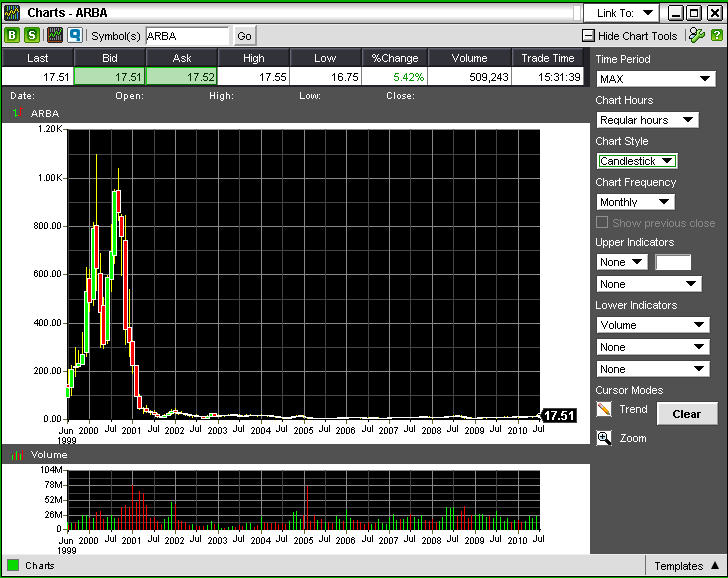Ariba's Costello on the transition to SaaS, business commerce

Ariba this week will report its fiscal third quarter results and highlight how it's becoming a company gaining software-as-a-service momentum.
The company, which focuses on spend and supplier management software, currently gets half of its revenue from on-demand applications. Four years ago, the company made the transition to SaaS. In May, Ariba launched its Commerce Cloud and inked an integration deal with IBM's Lotus Live.
It has been a long trip for Ariba. In 1999 and 2000, Ariba was one of the key glory stocks of the dot-com boom. Today, the company is on track to deliver annual revenue of about $353 million or so, a bit above the $325 million in sales for 2005.
We'll let the historical chart tell the tale.
The more recent picture is better as Ariba shares have nearly doubled in the last year.
Under the hood, Ariba has undergone a big transition and analysts say the company is emerging from the downturn in a good position. "We believe it is well positioned coming out of the downturn as the leading on demand vendor of spend management solutions," said JMP Securities analyst Patrick Walravens in a recent research note.
We recently spoke with Kevin Costello, president of Ariba, on the company's transition to software as a service and the prospects for B2B procurement.
On a transition to SaaS, Costello said the Ariba decided four years ago that on-demand delivery and cloud computing would be the way "most organizations buy software in the future." "So we built a true multitenant technology stack across all of our applications," said Costello. The company said it added 145 net new customers in 2009 in a poor economy. "We attribute that success to the SaaS model."
Regarding its SaaS customer profile, Costello said midmarket companies went the SaaS route for Ariba software quickly. Today, SaaS is being accepted by large enterprises, including those that have already licensed Ariba's traditional software. "Customers are buying new modules on the SaaS platform," said Costello. "The vast majority of new software acquisition is SaaS." Ariba has 25 percent to 30 percent of its customers on multiple platforms.
On potential competition from ERP vendors, Costello said Ariba is more of a partner. A lot of customers are using SaaS to wrap around their ERP systems. Analysts frequently expect SAP and Oracle to delve into the spend management market. Costello, however, noted that software companies have always carved a nice niche wrapping applications around ERP systems. "You wrap yourself around things that ERP companies can't do and don't want to do," said Costello.
As for the business model, Costello said it charges based on the utilization of its software. Ariba has compiled a supplier network with more than 300,000 suppliers. Overall, Ariba's commerce cloud moves $140 billion in transactions a year. Suppliers that move a lot of volume (about 15,000) pay fees based on volume and number of transactions, but the majority of them don't.
On IT decision makers, Costello said Ariba has to reach "five minds that matter" to sell it's wares. Those minds include the senior VP of supply chain and procurement, sales and marketing executives, the CFO and CIO. In a nutshell, it's all about procurement and working capital management.
Why isn't B2B commerce as easy as consumer commerce? Costello said "the business world hasn't taken the initiative that the individual consumer has to make a business cloud a reality." Before now, companies haven't done much to optimize intercompany commerce and 80 percent of transactions remain manual. However, the recession forced companies to weed out inefficient processes, said Costello.
